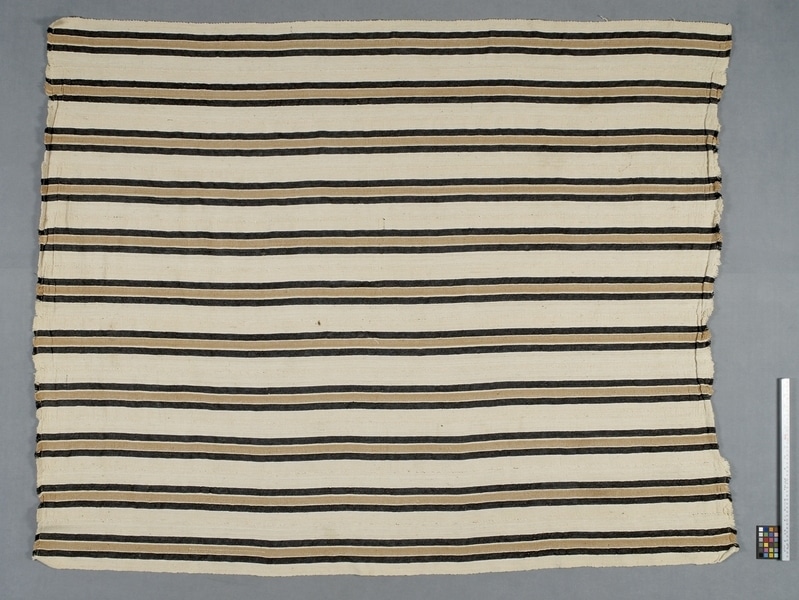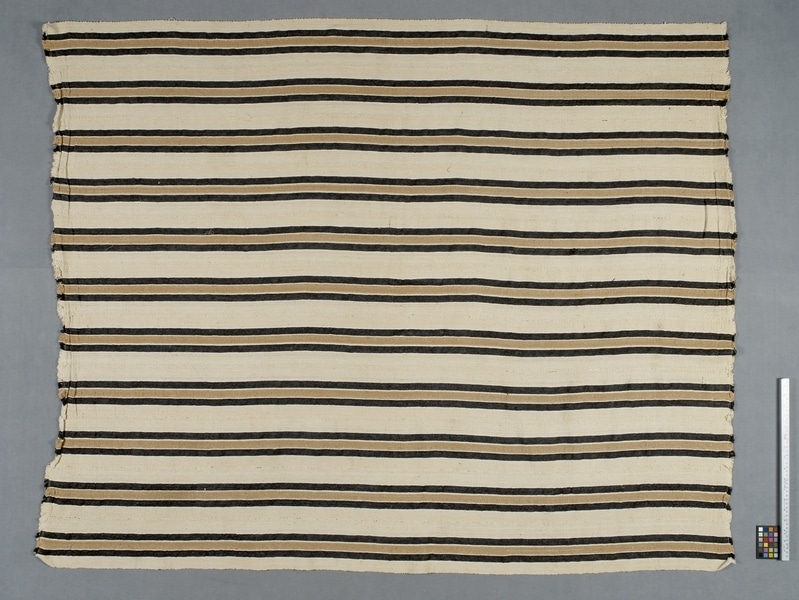Cloth Item Number: Af506 from the MOA: University of British Columbia


Description
Rectangular cloth consisting of eleven narrow strips 12 cm wide and sewn selvedge to selvedge. Stripes run the length of each strip in the same pattern. Starting at one side is a light brown-white selvedge; narrow white stripe; broad light brown-white band; narrow white; broad dark brown; narrow white; broad brown; narrow white; broad dark brown; narrow white and broad light brown-white selvedge. Creased along width at each end. Unwoven fringe at both ends is 1 cm wide. Small yellow stains overall.
History Of Use
Cloths of this type are made by sewing narrow strips of woven cloth, selvedge to selvedge. They are used throughout west Africa for clothing, ground cloths, covers, tent subdividers, and for other purposes. The cloth strips are woven by men on double-heddle looms. In the country, cloth is woven mostly from hand-spun cotton, spun by women on drop spindles. Patterns, colour, representations, and the number of stripes traditionally had religious and status significance. Different cloths were used for different occasions, and by people with varying status. Traditionally the patterns had names and specific meanings, which have now been mostly lost.
Cultural Context
clothing; furnishings
Narrative
The De Wreede collection was collected over a 2 year period in which the De Wreede's were mostly in Sierra Leone, and partly in Nigeria.
Item History
- Made in Sierra Leone ? before 1981
- Collected during 1981
- Owned by Robert De Wreede and Sharon De Wreede before January 8, 1982
- Received from Robert De Wreede (Donor) and Sharon De Wreede (Donor) on January 8, 1982
What
Who
- Culture
- Mende: Sherbo
- Previous Owner
- Robert De Wreede and Sharon De Wreede
- Received from
- Robert De Wreede (Donor) and Sharon De Wreede (Donor)
Where
- Holding Institution
- MOA: University of British Columbia
- Made in
- Sierra Leone ?
When
- Creation Date
- before 1981
- Collection Date
- during 1981
- Ownership Date
- before January 8, 1982
- Acquisition Date
- on January 8, 1982
Other
- Item Classes
- textiles
- Condition
- good
- Accession Number
- 0769/0004